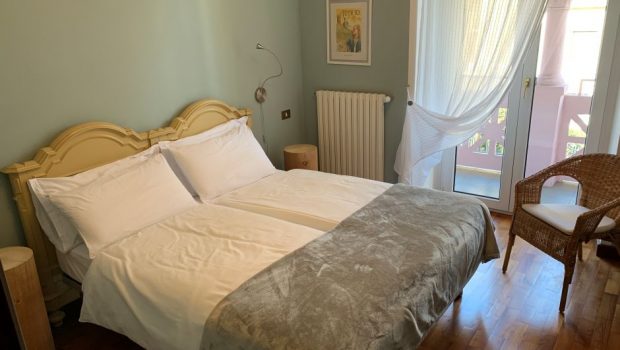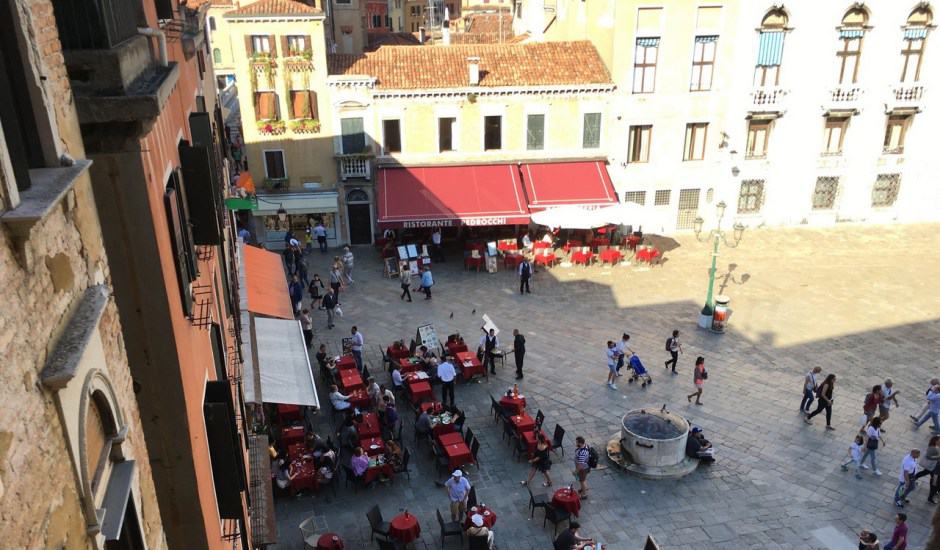The Bernina Express is a panoramic rail journey from Chur in Switzerland to Tirano in Italy through 55 tunnels and over 196 bridges in four hours of picturesque Alpine grandeur.
Although the standard sticker price is listed as €56, the Man In Seat 61 (the go-to resource for train-travel world-wide) has a method for getting tickets for as low as €29.90. Because of the demand for tickets on this route, it’s important to monitor when the tickets go on sale.
We missed the 2nd class tickets because we checked a couple of days after the batch went on sale, and because we were limited to only one date that we could travel. Which meant we either moved our plans to a different weekend or else splurged for slightly more expensive tickets. 1st class it was!
Our itinerary
We would fly into Zurich, stay overnight (at the wonderful 25hours Langstrasse, right beside the station) and then take an early morning train from Zurich to Chur, the starting point of the Bernina Express. We also decided to stay overnight in Tirano and then train to Milan the following day, instead of the other two options of taking an ongoing bus to Milan or going back to Chur on the returning train after a nice lunch, both of which could be booked at the same time as the train ticket.
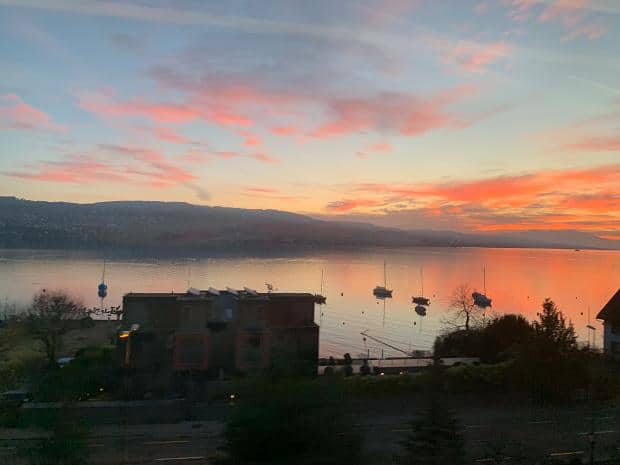
Zurich to Chur
We were lucky with the weather with blue skies grazed with orange clouds from the dawn sun making the brief trip from Zurich to Chur along the banks of the Zurichsee a pretty journey.
We breakfasted on the packed meal that the 25hours had given us, surrounded by skiers in helmets and boots on their way to one or other of the many ski fields around.
As the trip continued we found ourselves getting further and further behind schedule until we realised that we would not be able to make it to Chur in time for to catch the Bernina Express. At each station, announcements were made in Swiss German about which platform the connecting train was leaving from which gave us hope that the connections were waiting for us to arrive before leaving.
But with the language difference we couldn’t tell for sure, until a few minutes before we arrived in Chur. The usual non-English announcements were made but this time followed by the English translation confirming that the Bernina Express, leaving from the same platform but different line would leave as soon as all were aboard.
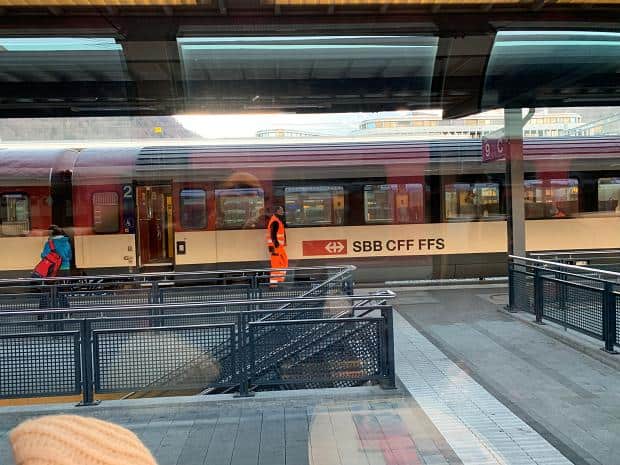
Bernina Express: Chur to Tirano
It was with great relief that we hopped out of the Zurich train, and found the Bernina Express waiting for us on the other side of the platform. As we settled in, the train began its journey, lurching out of the station to a little impatience from the passengers who had managed to make it onboard on time.
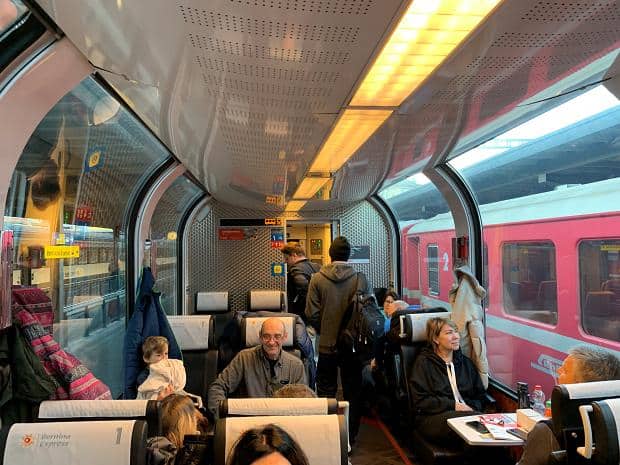
We settled in: the first class carriages have four seats one side, two facing two, while across the aisle another couple face one another. When you select your seats you get to choose which ones you want but there’s no guarantee on which way the train will be travelling so you don’t know if you’ll be on the left or the right.
Our conductor was multilingual, giving us the same spiel each time he came through in Swiss German, then in Italian and finally in English. Once we got going and everyone was settled in he came through and checked tickets. And then a number of minutes later he came and let us know that a small bridge over a deep gorge would be coming up on the right.
The train practically went up on two wheels as everyone went over to that side of the train and tried to take photos. The reflection of the glass windows made it difficult to get a good shot, and I remarked to Ange as we examined what shots I was able to take that it would have been better to have taken those shots out the window.
On either side of the carriage, just beyond the seating areas was a small area with windows that opened on either side of the carriage. This was the only place you could take photos without risk of reflection or distortion due to the large viewing windows. The area got quite congested though as only one person could really stand there and take photos.
I shuddered to think how close some people got to losing their phone out the window. There was no way the train would wait while you retrieved it!! If I’m giving advice, I’d say stake out your claim early on the right hand side to get a good shot of the chasm and bridge.
But the reflections weren’t all bad though, and made for a nice composition of Ange taking a shot of the Landwasser Viaduct. The train slowed considerably at the most picturesque spots, allowing the passengers to get the best shots possible which was much appreciated. Brochures noted the best spots and announcements ensured that there were no surprises.
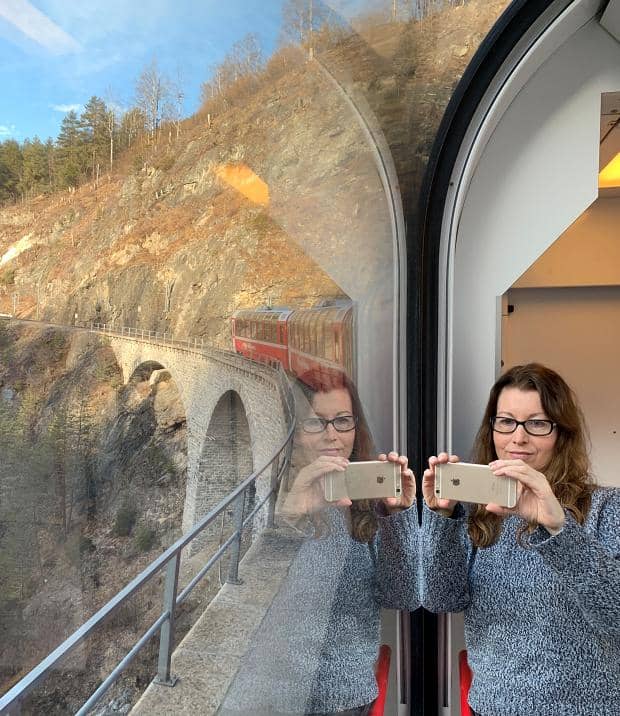
And even when one of the highlights wasn’t coming up the scenery was photo worthy, our climb into the mountains marked by the greenery of lakelevel transforming into the brown of the tussock and then into the white of the snow.
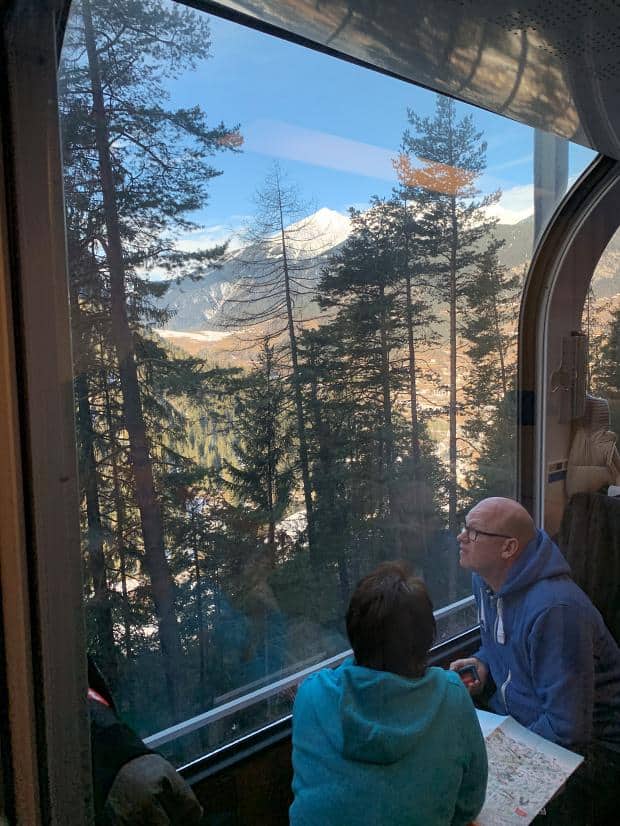
It wasn’t long before the rail line was crisscrossing a toboggan run, the first sign of the extensiveness of arctic sports visible from the train. Occasionally the toboggan run would be elevated above the rail line, leading to humorous views of disembodied helmeted heads zooming behind waist high walls, until the relative elevations righted themselves and the run crossed beneath the railway showing the tobogganer in full.
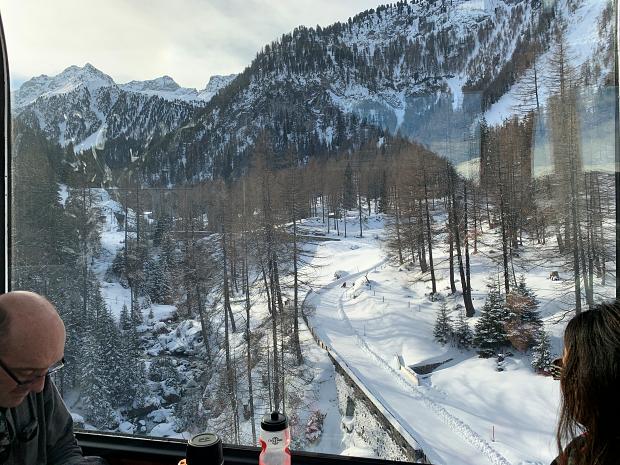
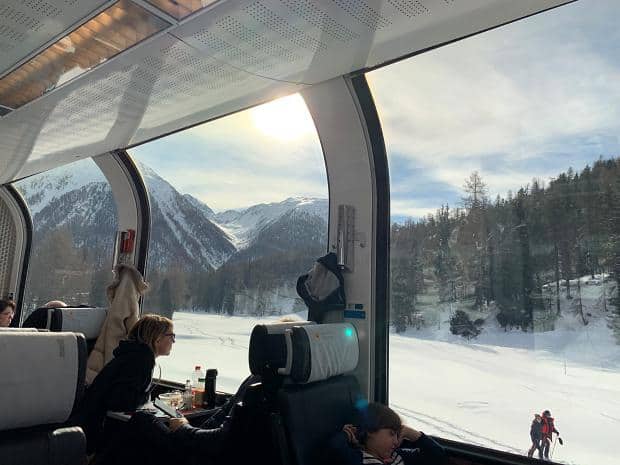
After the tobogganers were the cross country and Nordic skiers. The villages were spaced out without roads between them and the skiers made short work of the distances. We saw some obviously taking lessons, a circle of them making donuts in the snow.
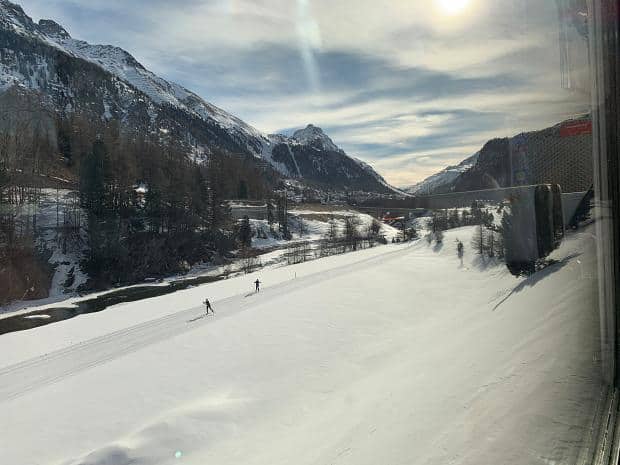
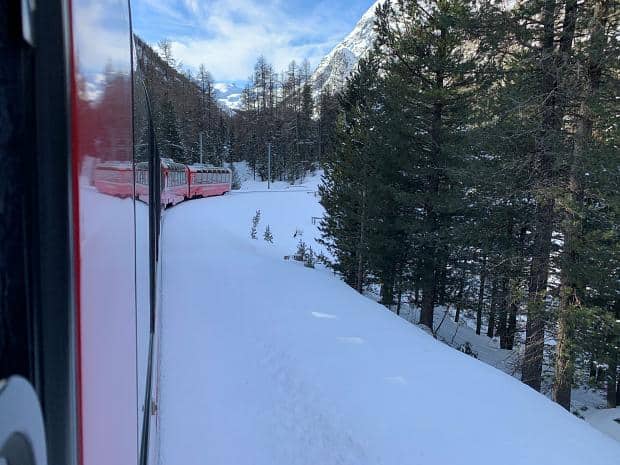
As we got higher and closer to the top of the mountain pass, the forests began to give way to barer slopes, and the railway was joined by the road. Occassionally the road and rail would cross, the first we noticed would be a line of cars parked on the road and then the crossing with bells ringing and lights flashing and then off we’d go, branching off before eventually recrossing the road again.

We pulled into a few stations on the way up, one at the head of the toboggan run, another engulfed in some sort of machinery that looked like conveyor belts, and one which serviced a ski run. It was funny watching the skiers practically end their runs on the train.
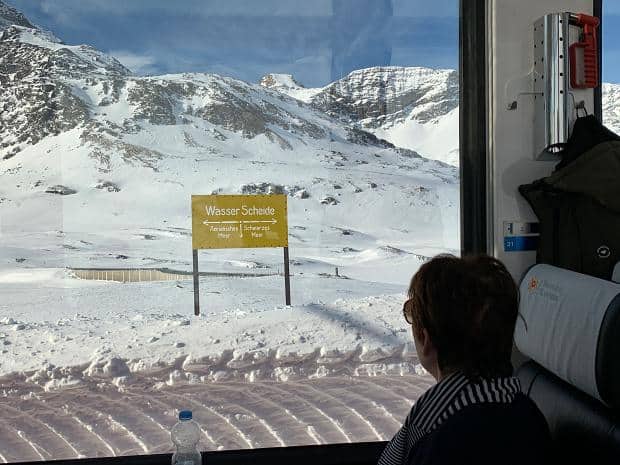
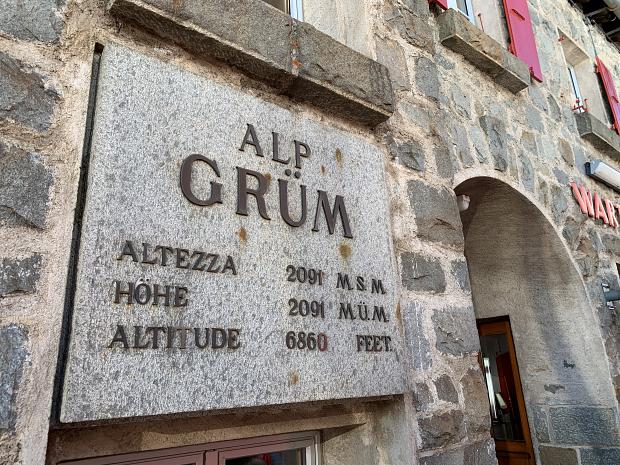
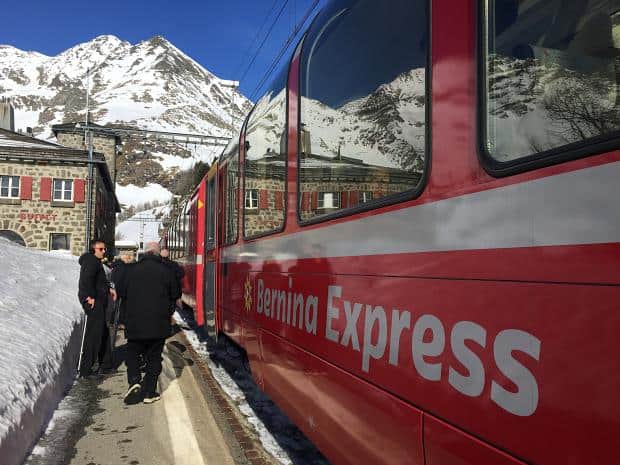
At the top of the pass, Alp Grum, we had a twenty minute stop to enjoy the sights. The concessionaire waited outside the carriage, selling shots of grappa instead of pushing his trolley through the aisles inside. A stone building turned out to be a cafe/restaurant and I wondered what they did between trains as there didn’t seem to be road access.
Most people elected to look out over the valley on the deck of the cafe instead of going inside, and we followed the crowd towards the edge of the flat area beside the railway but the going was ice and we only had sports shoes, so we headed back to the deeper drifts away from the long drop to the valley floor below.
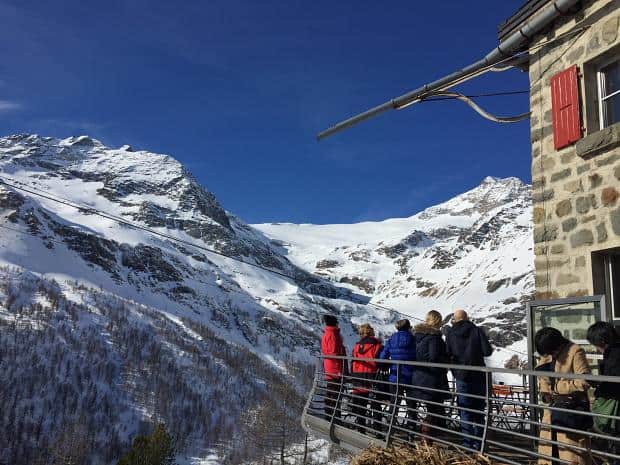
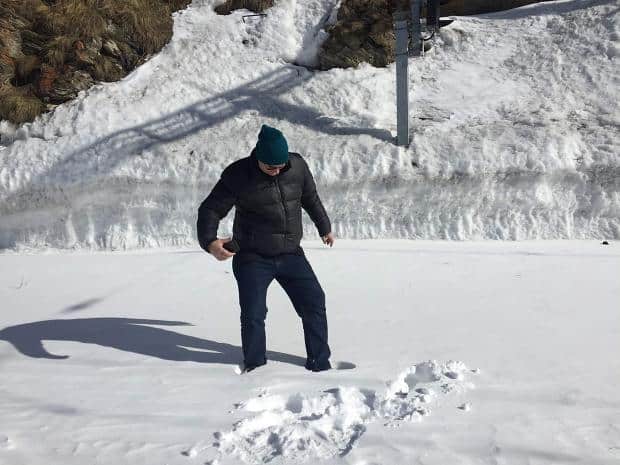
It was a relief to get out of the carriage: three hours in a train is not the worst use of time especially when the scenery is so good, but the fresh air and exercise was a welcome change.

We started our descent down the other side of the valley, the railway line protected by buttresses giving a strobe effect as the train went through.
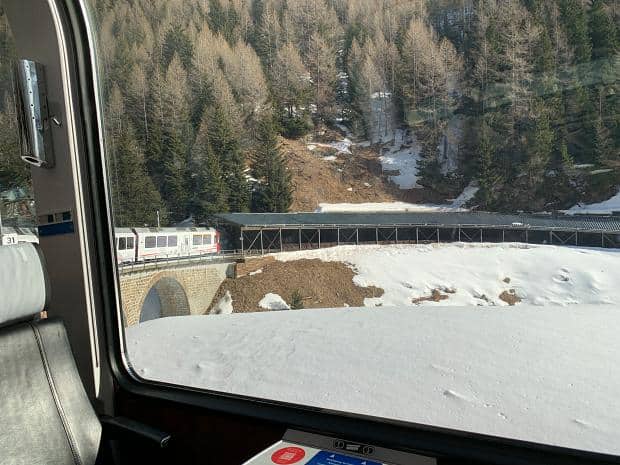
We saw where the side of the mountain faced the sun and so the snow would melt in the heat, but then just as quickly freeze, forming stalactites among the tussock and rock.
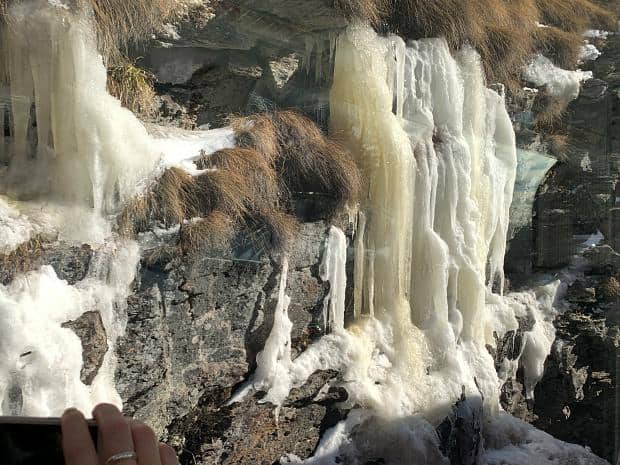

We knew we were getting close to the end when the train started to travel in a straight line instead of wending and winding back on itself, losing altitude and hugging the contours of the mountainside. We were rewarded with some spectacular views of Lago di Poschiavo, a mirror lake.

The final highlight was the Brusio Circular Viaduct which takes the railway around 360 degrees. It’s supposed to be the most spectacular construction on the Bernina Express rail line, but after all the other things we’d seen it was nice, but nothing special. Maybe I was just all wowed out?
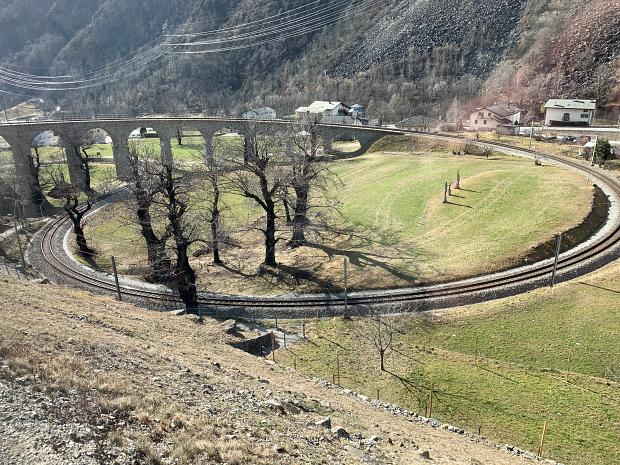
And that’s pretty much it. We got off at Tirano and made our way to our accommodation instead of grabbing lunch or taking the bus immediately to Milan. We explored the town pretty thoroughly (it has a population of less than 10,000) during the rest of the afternoon and the next morning, before hopping on another train to Milan at around 3pm.
